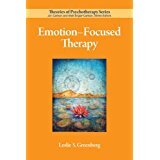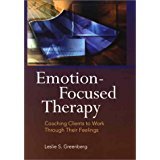- Articles
- Forum Archive
- Psychology, Psychiatry, Psychotherapy, and Health
- Therapy, Therapists, and Self-Help
You are using an out of date browser. It may not display this or other websites correctly.
You should upgrade or use an alternative browser.
You should upgrade or use an alternative browser.
- Thread starter rank
- Start date
More threads by rank
EFT approaches are based on the premise that human emotions are connected to human needs, and therefore emotions have an innately adaptive potential that, if activated and worked through, can help people change problematic emotional states and interpersonal relationships...
All EFT approaches have retained emphasis on the importance of Rogerian empathic attunement and communicated understanding. They all focus upon the value of engaging clients in emotional experiencing moment-to-moment in session.[27] Thus, an experiential focus is prominent in all EFT approaches.[28] All EFT theorists have expressed the view that individuals engage with others on the basis of their emotions, and construct a sense of self from the drama of repeated emotionally laden interactions.[18]
The information-processing theory of emotion and emotional appraisal (in accordance with emotion theorists such as Magda B. Arnold, Paul Ekman, Nico Frijda, and James Gross) and the humanistic, experiential emphasis on moment-to-moment emotional expression (developing the earlier psychotherapy approaches of Carl Rogers, Fritz Perls, and Eugene Gendlin) have been strong components of all EFT approaches since their inception.[29] EFT approaches value emotion as the target and agent of change, honoring the intersection of emotion, cognition, and behavior.[30] EFT approaches posit that emotion is the first, often subconscious response to experience.[31] All EFT approaches also use the framework of primary and secondary (reactive) emotion responses.[32]
forgetmenot
MVP
Interview with Dr. Leslie Greenberg: Introduction to Emotion-Focused Therapy Theory

Emotion-Focused Therapy by Leslie S. Greenberg (Dec 1 2010)

Emotion-Focused Therapy: Coaching Clients to Work Through Their Feelings by Greenberg (Jan 7 2002)

Emotion-Focused Therapy by Leslie S. Greenberg (Dec 1 2010)
- CDN$ 27.33 CDN$ 24.95 Paperback
- Order in the next 71 hours and get it by Tuesday, May 27.
- Only 2 left in stock - order soon.
- CDN$ 14.94 Kindle Edition
- Available for download now
- More buying choices - Paperback
- CDN$ 14.73 new (23 offers)
- CDN$ 23.01 used (7 offers)
- Eligible for FREE Super Saver Shipping.
- Books: See all 521 items

Emotion-Focused Therapy: Coaching Clients to Work Through Their Feelings by Greenberg (Jan 7 2002)
- CDN$ 57.50 CDN$ 43.10 Hardcover
- Order in the next 70 hours and get it by Tuesday, May 27.
- Only 1 left in stock - order soon.
- CDN$ 33.30 Kindle Edition
- Available for download now
- More buying choices - Hardcover
Last edited:
EFT approaches are based on the premise that human emotions are connected to human needs, and therefore emotions have an innately adaptive potential that, if activated and worked through, can help people change problematic emotional states and interpersonal relationships...
All EFT approaches have retained emphasis on the importance of Rogerian empathic attunement and communicated understanding. They all focus upon the value of engaging clients in emotional experiencing moment-to-moment in session.[27] Thus, an experiential focus is prominent in all EFT approaches.[28] All EFT theorists have expressed the view that individuals engage with others on the basis of their emotions, and construct a sense of self from the drama of repeated emotionally laden interactions.[18]
The information-processing theory of emotion and emotional appraisal (in accordance with emotion theorists such as Magda B. Arnold, Paul Ekman, Nico Frijda, and James Gross) and the humanistic, experiential emphasis on moment-to-moment emotional expression (developing the earlier psychotherapy approaches of Carl Rogers, Fritz Perls, and Eugene Gendlin) have been strong components of all EFT approaches since their inception.[29] EFT approaches value emotion as the target and agent of change, honoring the intersection of emotion, cognition, and behavior.[30] EFT approaches posit that emotion is the first, often subconscious response to experience.[31] All EFT approaches also use the framework of primary and secondary (reactive) emotion responses.[32]
Replying is not possible. This forum is only available as an archive.
Similar threads
- Replies
- 0
- Views
- 18K
- Replies
- 1
- Views
- 4K
- Replies
- 1
- Views
- 2K
- Replies
- 2
- Views
- 3K
